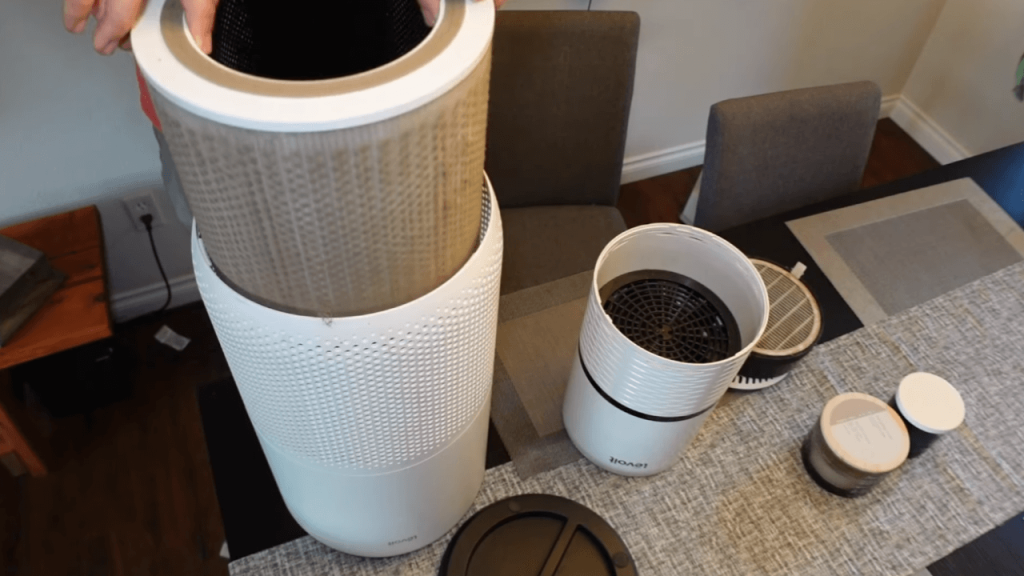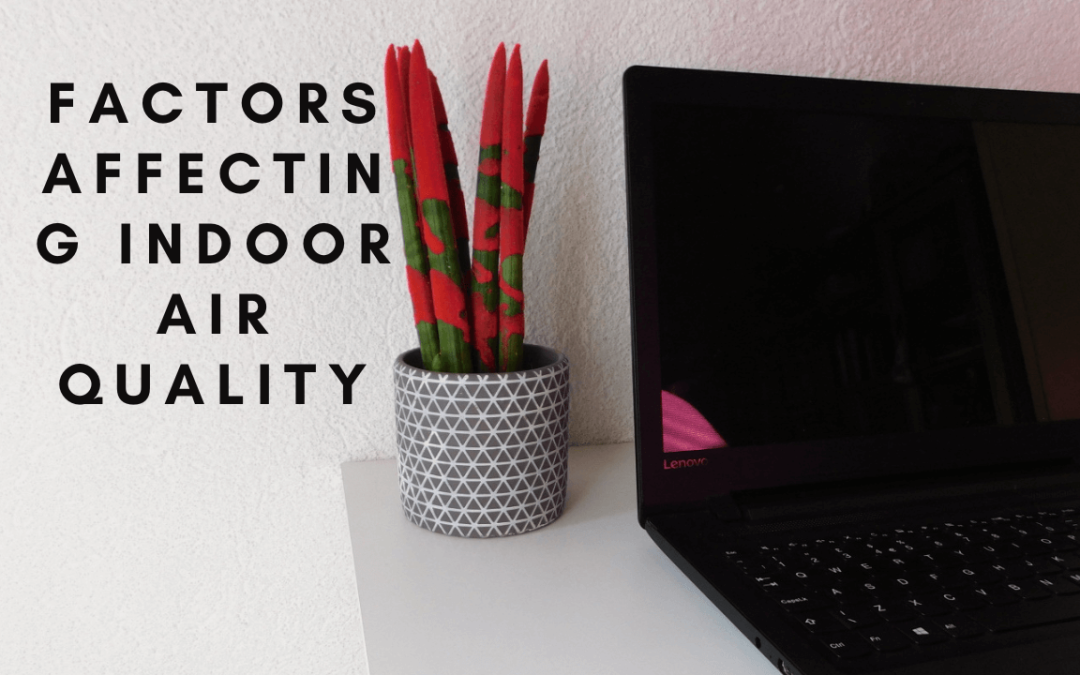Indoor air quality (IAQ) is of utmost importance to arborists, as it directly impacts the well-being of both humans and the natural environment. IAQ refers to the overall air quality within and around buildings and structures, with a specific focus on the health and comfort of occupants. Numerous factors contribute to IAQ, including building design, materials used, occupant activities, and the quality of outdoor air. When IAQ is compromised, it can result in a range of health issues, spanning from immediate respiratory problems and headaches to long-term risks like cancer.
Maintaining good IAQ is vital for several reasons. Firstly, it safeguards the health and well-being of building occupants, prioritizing their comfort and safety. Furthermore, optimal IAQ has proven benefits in workplaces, promoting higher productivity and reducing absenteeism. Similarly, in educational settings, improved IAQ can enhance learning outcomes. Lastly, by ensuring good IAQ, we can contribute to energy efficiency, lowering costs, and enhancing the overall sustainability of buildings.
The purpose of this blog post is to delve into the various Factors Affecting Indoor Air Quality, shed light on the health consequences of poor IAQ, and provide practical strategies for improvement. By the conclusion of this post, readers will have gained valuable insights into effectively maintaining excellent IAQ within their own homes and workplaces, understanding the intrinsic value of doing so. Together, let us prioritize and advocate for clean, healthy air in our built environments.
Sources of indoor air pollutants
It is crucial to understand the impact of indoor air pollutants on both human health and the surrounding ecosystem. Indoor air pollutants can originate from various sources, including biological, chemical, and particulate matter sources. These pollutants have the potential to significantly deteriorate indoor air quality (IAQ) and pose a range of health risks to building occupants.
Biological sources of indoor air pollutants encompass mold, bacteria, viruses, dust mites, and pet dander. These organisms thrive in moist or humid environments like bathrooms, kitchens, and basements, and can trigger respiratory issues, allergies, and other health complications.
Chemical sources of indoor air pollutants arise from cleaning products, tobacco smoke, building materials, and furniture. These chemicals can enter the air through off-gassing, combustion, or other mechanisms, resulting in adverse health effects such as headaches, dizziness, and other ailments.
Particulate matter sources of indoor air pollutants involve dust, pollen, and pet dander, which can infiltrate indoor spaces from outdoor origins. These particles can provoke respiratory problems and allergies among occupants.
Identifying and mitigating the sources of indoor air pollutants is a fundamental step in preserving optimal IAQ. This can be achieved through efficient ventilation systems, regular cleaning and maintenance practices, and minimizing the use of chemical-based products. Moreover, the implementation of air purifiers and filters can aid in eliminating pollutants and enhancing IAQ.
By prioritizing the identification and remediation of indoor air pollutants, arborists contribute to creating healthier indoor environments that promote the well-being of both humans and the natural world.
Factors affecting IAQ

A variety of Factors Affecting Indoor Air Quality it is essential to comprehend and address these factors to ensure a healthy and conducive environment for both people and the surrounding ecosystem.
Ventilation systems serve as a vital component in maintaining optimal IAQ. These systems, including HVAC (heating, ventilation, and air conditioning) setups, facilitate the exchange of fresh air while expelling stale air from indoor spaces. Well-designed and properly maintained ventilation systems aid in controlling the flow of air and pollutants, as well as regulating temperature and humidity levels.
Temperature and humidity levels also significantly impact IAQ. Elevated temperatures and excessive humidity create favorable conditions for the growth of mold and bacteria, while low temperatures and humidity levels can result in dry air and related issues. Effective control of temperature and humidity ensures a healthy IAQ and enhances occupant comfort.
The design and materials employed in building construction can influence IAQ as well. Specific building materials like carpets, furniture, and insulation may emit volatile organic compounds (VOCs) and other chemicals that can compromise IAQ. Selecting appropriate building materials and employing design features that minimize the presence of such pollutants can significantly reduce their levels.
Lastly, the quality of outdoor air can affect IAQ. Outdoor pollutants like pollen and smog can infiltrate indoor environments, and outdoor ventilation also plays a role in IAQ. Implementing suitable filtration and ventilation systems helps mitigate the influence of outdoor air quality on IAQ.
Comprehending and managing these Factors Affecting Indoor Air Quality. Regular monitoring and maintenance practices ensure the proper functioning of ventilation systems, while also maintaining optimal temperature and humidity levels and controlling pollutants.
Health effects of poor IAQ
Poor indoor air quality (IAQ) can have significant implications for the health and well-being of building occupants, and it is crucial to understand and address these issues to create a healthier indoor environment.
Short-term effects of poor IAQ encompass a range of symptoms, including headaches, dizziness, eye, nose, and throat irritation, as well as fatigue. These immediate health concerns are often attributed to exposure to biological, chemical, or particulate matter pollutants present in the indoor environment.
However, the long-term effects of poor IAQ can be more severe and pose greater health risks. Prolonged exposure to inadequate IAQ has been linked to respiratory issues such as asthma and chronic obstructive pulmonary disease (COPD), cardiovascular diseases, and even cancer. Certain indoor air pollutants like asbestos, radon, and volatile organic compounds (VOCs) can significantly increase the likelihood of developing these serious health conditions.
It is important to recognize that vulnerable populations, such as children, the elderly, and individuals with pre-existing health conditions, are particularly susceptible to the health effects of poor IAQ. Children, due to their developing immune systems and smaller size, are especially prone to respiratory problems as a result of exposure to indoor pollutants.
To safeguard the health and well-being of building occupants, it is essential to identify and address the sources of indoor air pollutants. Implementing regular cleaning and maintenance practices, ensuring proper ventilation and air filtration, and reducing or eliminating the use of chemical products that contribute to poor IAQ are all key steps in improving IAQ and mitigating its negative health effects.
Improving IAQ

Improving indoor air quality (IAQ) is an important aspect of creating healthier indoor environments, I recognize the significance of addressing IAQ concerns. Here are some ways to improve IAQ:
Proper ventilation: Adequate ventilation plays a crucial role in maintaining good IAQ. This can be achieved by opening windows and doors to allow fresh air circulation, utilizing exhaust fans in moisture-prone areas like bathrooms and kitchens, and ensuring that heating, ventilation, and air conditioning (HVAC) systems are well-maintained and functioning properly.
Temperature and humidity control: Maintaining optimal indoor temperature and humidity levels is key to promoting good IAQ. Employing air conditioning and dehumidifiers can help regulate humidity, while avoiding extreme heat and cold conditions.
Air purifiers and filters: Using air purifiers and filters can effectively remove pollutants from the air, thereby improving IAQ. HEPA filters are especially efficient in eliminating particulate matter pollutants, while activated carbon filters can help remove chemical contaminants.
Reducing chemical product usage: Many common household and cleaning products contain chemicals that can contribute to poor IAQ. Opting for environmentally friendly or low-volatile organic compound (VOC) products and minimizing the use of chemical-based products can significantly enhance IAQ.
Regular cleaning: Implementing regular cleaning practices aids in the removal of indoor pollutants. Vacuuming carpets and rugs, dusting surfaces, and mopping floors help reduce the accumulation of dust, allergens, and other contaminants.
Addressing moisture sources: Moisture accumulation can promote the growth of mold and bacteria, negatively impacting IAQ. Identifying and rectifying sources of moisture such as leaky pipes or damp basements is essential for improving IAQ.
Radon testing: Radon, a radioactive gas, can infiltrate indoor spaces from the ground. Testing for radon levels and implementing measures to reduce its concentration can improve IAQ and lower the risk of lung cancer.
Conclusion
In conclusion, indoor air quality (IAQ) is a critical aspect of ensuring the health and comfort of building occupants. Poor IAQ can lead to a range of immediate and long-term health issues, from respiratory problems to severe conditions like cancer. Factors Affecting Indoor Air Quality include building design, ventilation, occupant activities, and outdoor air quality. Biological, chemical, and particulate matter pollutants from various sources contribute to poor IAQ, and it is vital to identify and mitigate these sources.
Improving IAQ involves a comprehensive approach: ensuring proper ventilation, controlling temperature and humidity, using air purifiers and filters, reducing the use of harmful chemicals, maintaining regular cleaning practices, addressing moisture sources, and conducting radon testing. These strategies not only enhance the health and well-being of occupants but also promote productivity, learning outcomes, and overall sustainability in both homes and workplaces.
This blog post highlights the importance of understanding and prioritizing IAQ. By adopting practical strategies for improvement, we can create healthier, more comfortable, and sustainable indoor environments. The benefits of good IAQ extend beyond individual health, contributing to environmental harmony and advocating for a cleaner, healthier world for everyone.

